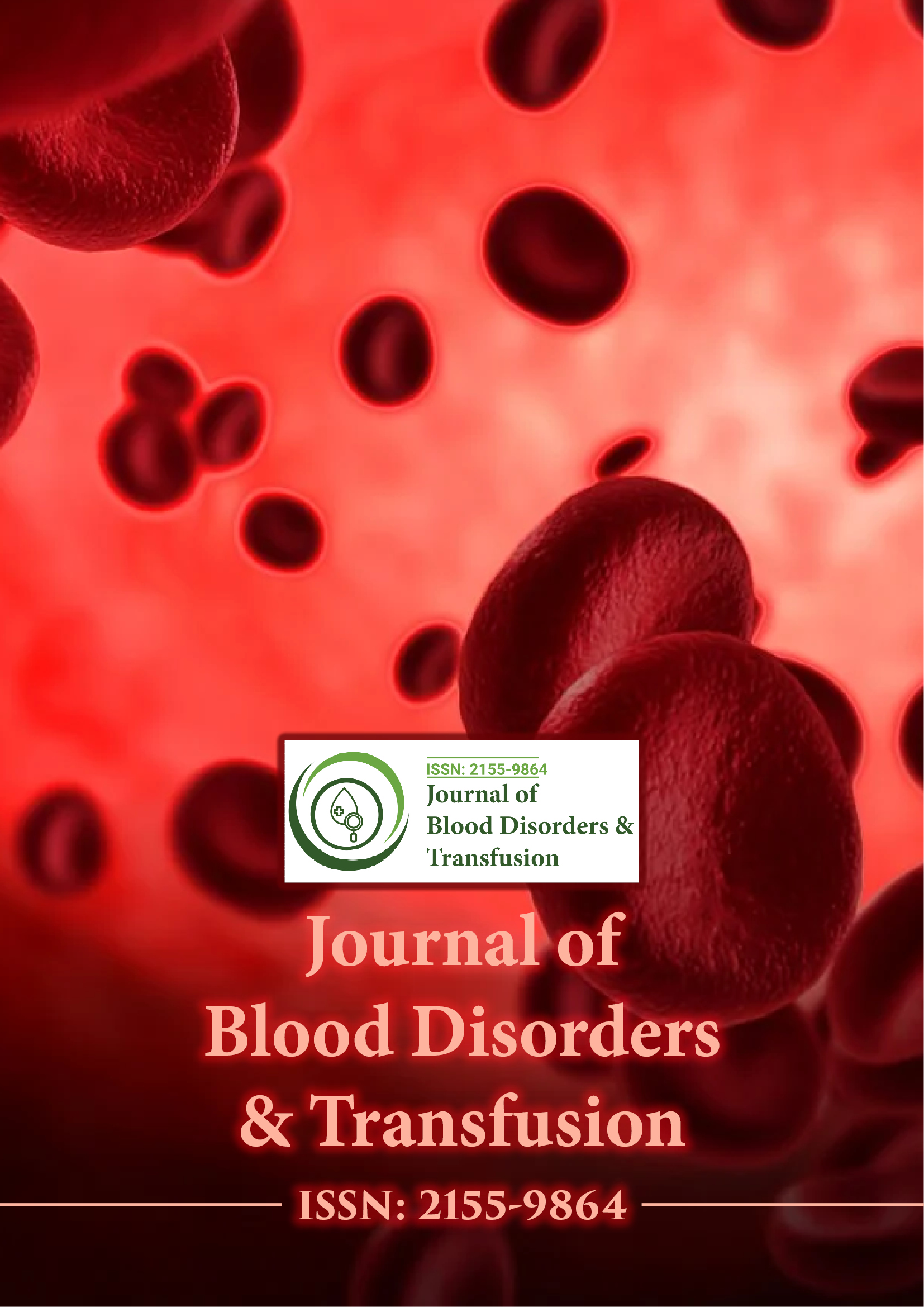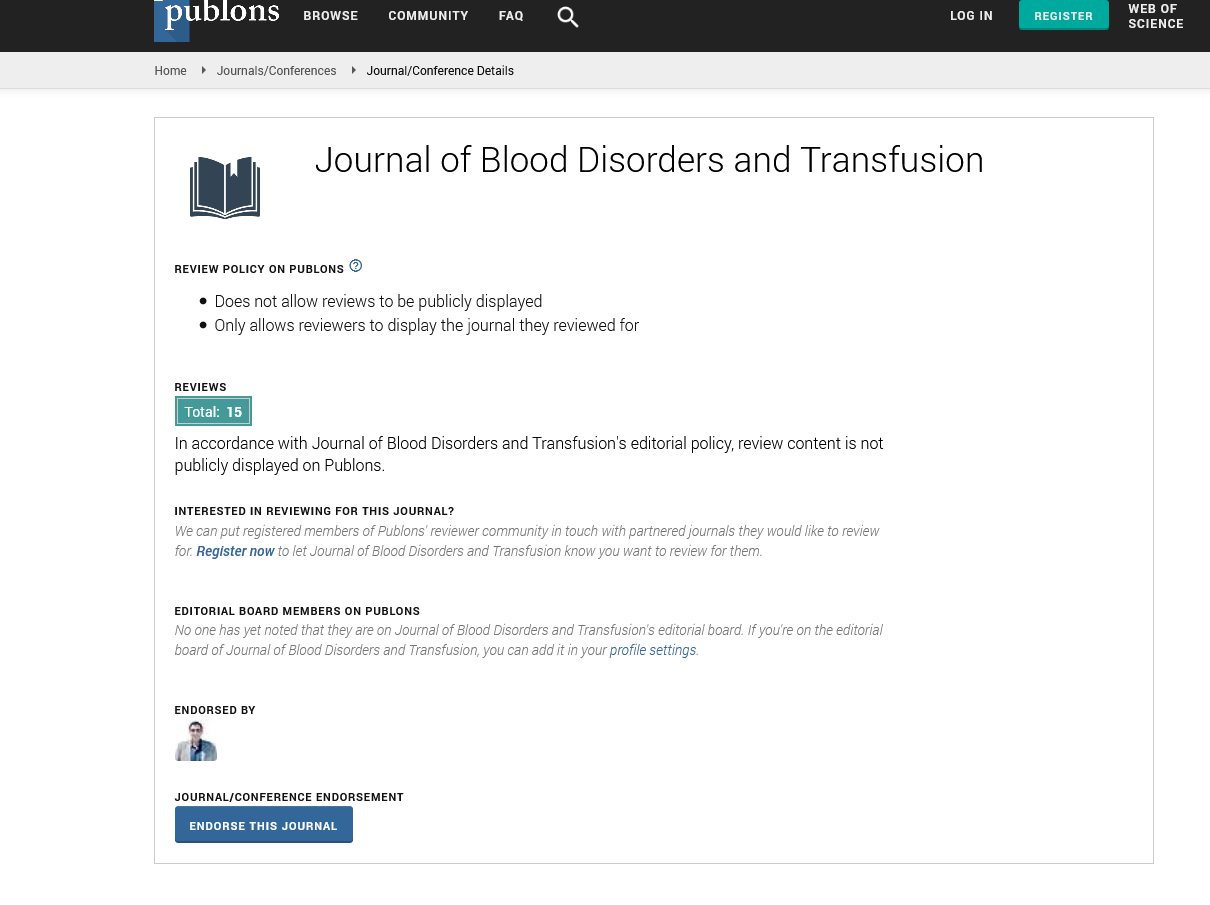Indexed In
- Open J Gate
- Genamics JournalSeek
- JournalTOCs
- Ulrich's Periodicals Directory
- RefSeek
- Hamdard University
- EBSCO A-Z
- OCLC- WorldCat
- Proquest Summons
- Publons
- Geneva Foundation for Medical Education and Research
- Euro Pub
- Google Scholar
Useful Links
Share This Page
Journal Flyer

Open Access Journals
- Agri and Aquaculture
- Biochemistry
- Bioinformatics & Systems Biology
- Business & Management
- Chemistry
- Clinical Sciences
- Engineering
- Food & Nutrition
- General Science
- Genetics & Molecular Biology
- Immunology & Microbiology
- Medical Sciences
- Neuroscience & Psychology
- Nursing & Health Care
- Pharmaceutical Sciences
Opinion Article - (2025) Volume 16, Issue 3
The Role of Hydroxyurea in Improving Pediatric Sickle Cell Anemia
Alvise Byfield*Received: 28-Apr-2025, Manuscript No. JBDT-25-28998; Editor assigned: 01-May-2025, Pre QC No. JBDT-25-28998 (PQ); Reviewed: 15-May-2025, QC No. JBDT-25-28998; Revised: 22-May-2025, Manuscript No. JBDT-25-28998 (R); Published: 29-May-2025, DOI: 10.4172/2155-9864.25.16.621
Description
Sickle Cell Anemia (SCA) is a hereditary blood disorder marked by the presence of abnormally shaped red blood cells. These sickled cells can cause a range of complications, including anemia, pain crises, organ damage and increased risk of infection. Affecting millions globally, SCA remains a significant health challenge, especially in pediatric populations where early intervention can influence disease progression and quality of life. Hydroxyurea has been widely used as a treatment option to reduce the frequency of sickling events and associated complications.
Mechanism of action and therapeutic effects
Hydroxyurea acts by stimulating the bone marrow to produce more fetal hemoglobin, which is less likely to sickle compared to adult hemoglobin. The elevated HbF levels dilute the concentration of sickle hemoglobin within red blood cells, resulting in fewer sickling episodes. Additionally, hydroxyurea exerts effects such as reducing white blood cell counts and lowering adhesion molecule expression, which together contribute to decreased inflammation and vascular occlusion.
In pediatric patients, hydroxyurea use has been associated with a reduction in the frequency of painful vaso-occlusive crises, acute chest syndrome and the need for blood transfusions. Moreover, the medication improves overall hemoglobin levels, reducing anemia severity. These benefits help decrease hospitalizations and improve children's quality of life.
Long-Term clinical outcomes
Assessing hydroxyurea’s long-term impact involves observing clinical parameters, organ function, growth and neurocognitive outcomes. Studies have shown that children on hydroxyurea experience fewer pain episodes and reduced acute chest syndrome over several years of continuous therapy. This contributes to decreased healthcare utilization and less disruption in daily activities such as school attendance.
In addition, long-term hydroxyurea treatment may slow the progression of organ damage caused by repeated sickling and vaso-occlusion. The kidney, lungs and brain are particularly vulnerable in sickle cell disease, and evidence suggests that hydroxyurea helps protect these organs by maintaining better blood flow and reducing inflammation.
Safety and monitoring
One aspect often examined in long-term treatment is the safety profile of hydroxyurea. In pediatric patients, hydroxyurea has demonstrated a generally favorable safety record. Common side effects such as mild bone marrow suppression are manageable with regular monitoring. Long-term follow-up has not revealed increased risks of malignancy or severe toxicity, which had been initial concerns with the drug.
Routine blood counts and liver function tests are recommended to monitor for cytopenias and other potential adverse effects. Most children tolerate hydroxyurea well with dose adjustments based on blood parameters.
Adherence and quality of life
A key factor influencing the success of hydroxyurea therapy in children is adherence to medication. The chronic nature of treatment requires commitment from both patients and caregivers. Educational efforts emphasizing the benefits of therapy and addressing concerns about side effects can improve adherence rates.
Improvements in clinical outcomes translate into better quality of life. Children treated with hydroxyurea report fewer pain episodes and hospital visits, enabling more regular participation in school and social activities. This fosters emotional well-being and supports overall development.
Research and future directions
Ongoing research is examining the optimal dosing regimens, duration of treatment, and potential combination therapies to maximize hydroxyurea’s benefits. Additionally, newer agents targeting different pathways of sickling and inflammation are being studied. Hydroxyurea remains a cornerstone therapy while these advancements continue to develop. Emerging studies are also investigating the genetic factors influencing patient response to hydroxyurea. Understanding these variations may help identify which children will benefit most and guide personalized approaches to therapy.
Hydroxyurea offers significant benefits for children living with sickle cell anemia, reducing complications and improving clinical outcomes over extended periods. Its role in increasing fetal hemoglobin levels and modulating inflammatory processes contributes to less frequent pain crises, lower rates of acute chest syndrome and protection against organ damage. Safety profiles from long-term studies support its continued use under proper medical supervision. Maintaining adherence and ongoing monitoring remain essential components to maximize therapeutic effects and ensure early detection of side effects.
Citation: Byfield A (2025). The Role of Hydroxyurea in Improving Pediatric Sickle Cell Anemia. J Blood Disord Transfus. 16:621.
Copyright: © 2025 Byfield A. This is an open-access article distributed under the terms of the Creative Commons Attribution License, which permits unrestricted use, distribution, and reproduction in any medium, provided the original author and source are credited.

